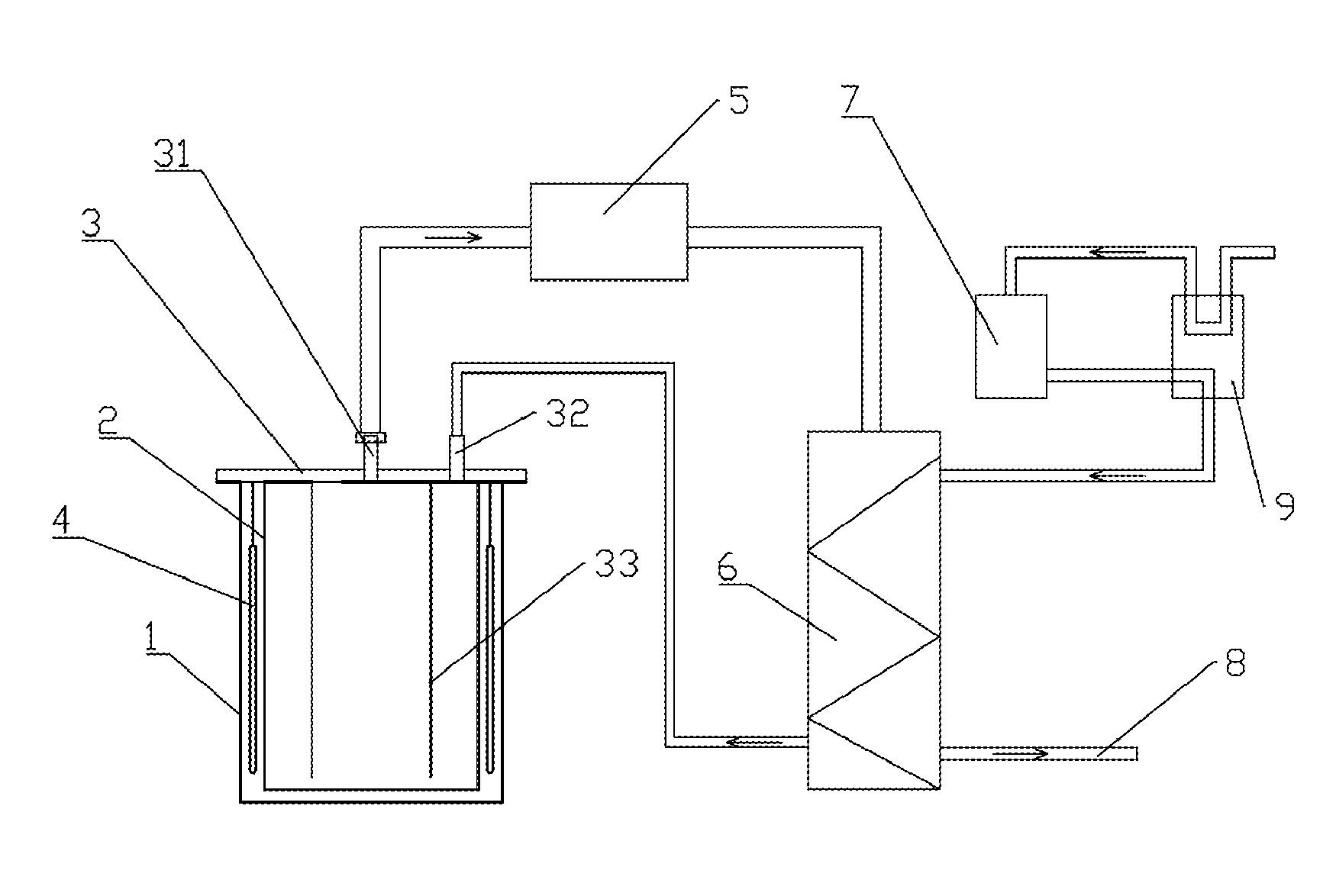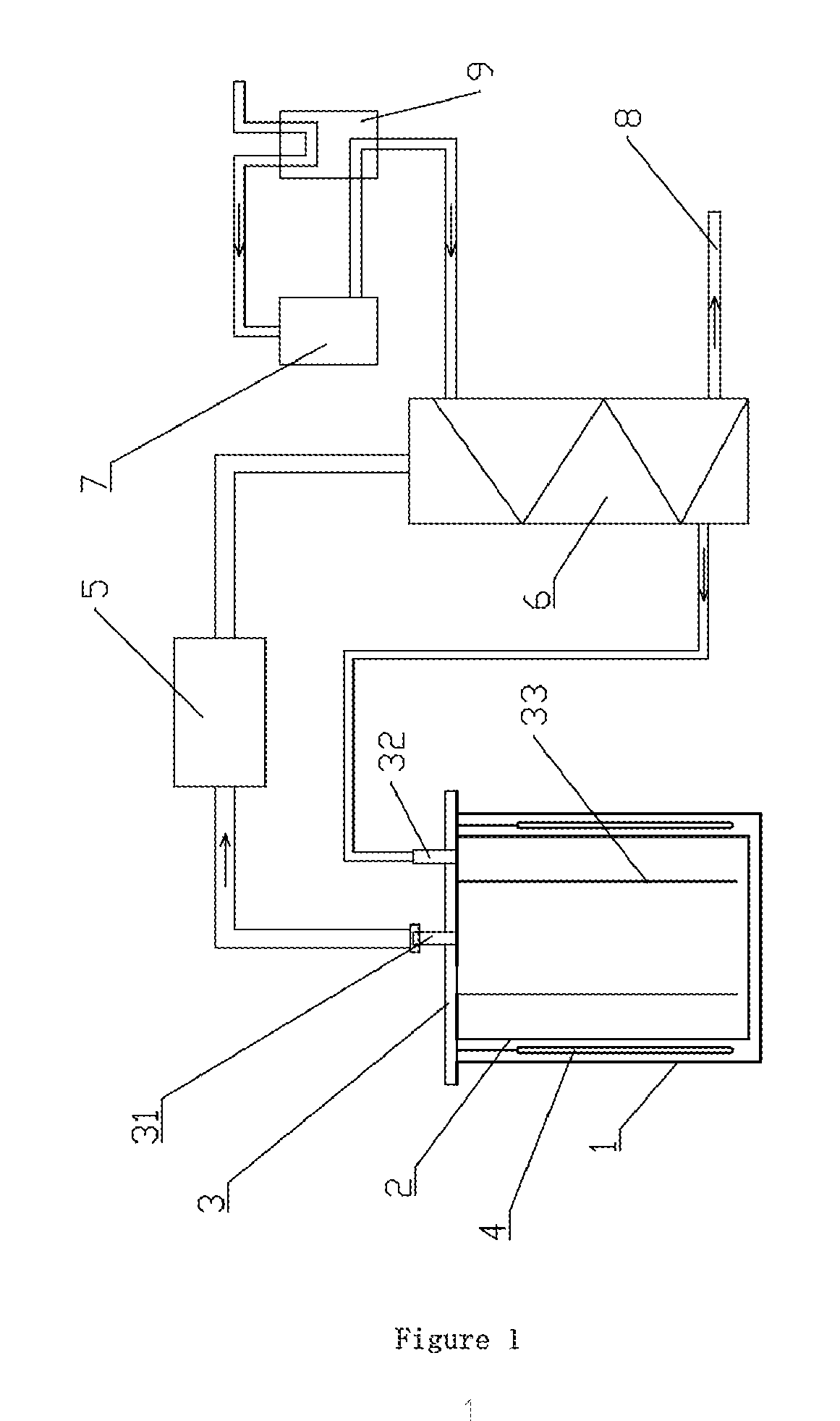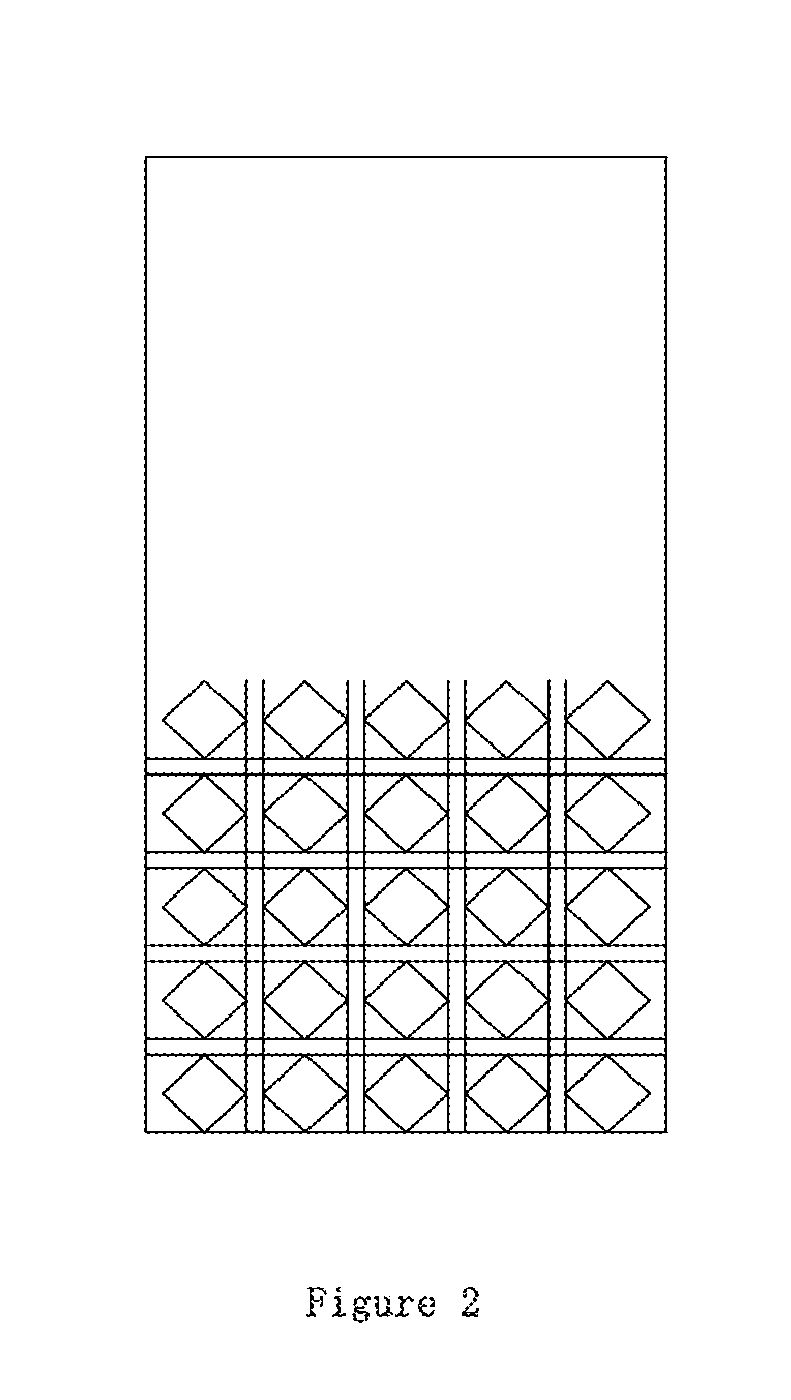Method and System for Quickly Extracting Lithium Carbonate from Saline Lake Water
a lithium carbonate and saline lake technology, applied in the direction of crystallization separation, separation process, alkali metal carbonates, etc., can solve the problems of large-scale exploitation of saline lake, serious restrictions on further development, low efficiency, etc., to achieve the effect of increasing the non-uniform nucleation area of lithium carbonate, and reducing the risk of saline lake pollution
- Summary
- Abstract
- Description
- Claims
- Application Information
AI Technical Summary
Benefits of technology
Problems solved by technology
Method used
Image
Examples
embodiment 1
[0047]1) The brine of North lake of Zhabuye saline lake taken in summer (the concentration of lithium ion is 0.78 g / L, and the initial temperature of the brine is 5° C. is cooled to −40° C. by industrial freezing system. After the precipitation of sodium chloride, potassium chloride, and aphthitalite, a solid-liquid separation is carried out to obtain the lithium-rich brine;
[0048]2) The obtained lithium-rich brine is transferred into the reduced-pressure evaporation crystallizers after being pre-heated by the preheating apparatus, wherein each crystallizer contains 30 L brine;
[0049]3) The brine is quickly heated to 60° C., evaporated at a reduced-pressure for 5 min, and the pressure of the crystallizer is balanced at 26 kPa. After 2 hours, a lithium-rich salt mixture having a thickness of about 2 mm has been deposited on the bottom of the crystallizer, and the residual brine is discharged.
[0050]The grade of obtained lithium carbonate in the mixture is 95.2%, and the precipitation ra...
embodiment 2
[0052]1) The brine of North lake of Zhabuye saline lake taken in summer (the concentration of lithium ion is 0.54 g / L, and the initial temperature of the brine is 8° C.) is cooled to −30° C. using an industrial freezing system. After precipitation of sodium chloride, potassium chloride, and aphthitalite, a solid-liquid separation is carried out to obtain the lithium-rich brine;
[0053]2) The obtained lithium-rich brine is transferred into the reduced-pressure evaporation crystallizers after being pre-heated by the preheating apparatus, wherein each crystallizer contains 30 L brine;
[0054]3) The brine is quickly heated to 70° C., evaporated at a reduced-pressure for 5 min, and the pressure of the crystallizer is balanced at 36 kPa. After 2 hours, a lithium-rich salt mixture having a thickness of about 2 mm has been deposited on the bottom of the crystallizer, and the residual brine is discharged.
[0055]The grade of obtained lithium carbonate in the mixture is 95.8%, and the precipitation...
embodiment 3
[0057]1) The brine of salt-span of Zhabuye saline lake which has been dried in the sun for 10 days (the concentration of lithium ion is 1.2 g / L, and the initial temperature of the brine is 5° C.) is cooled to −20° C. by industrial freezing system. After precipitation of sodium chloride, potassium chloride, and aphthitalite, a solid-liquid separation is carried out to obtain the lithium-rich brine;
[0058]2) The obtained lithium-rich brine is transferred into the reduced-pressure evaporation crystallizers after being pre-heated by the preheating apparatus, wherein each crystallizer contains 30 L brine;
[0059]3) The brine is quickly heated to 75° C., evaporated at a reduced-pressure for 5 min, and the pressure of the crystallizer is balanced at 40 kPa. After 2 hours, a lithium-rich salt mixture having a thickness of about 4 mm has been deposited on the bottom of the crystallizer, and the residual brine is discharged.
[0060]The grade of obtained lithium carbonate in the mixture is 96.6%, a...
PUM
| Property | Measurement | Unit |
|---|---|---|
| Temperature | aaaaa | aaaaa |
| Temperature | aaaaa | aaaaa |
| Temperature | aaaaa | aaaaa |
Abstract
Description
Claims
Application Information
 Login to View More
Login to View More - R&D
- Intellectual Property
- Life Sciences
- Materials
- Tech Scout
- Unparalleled Data Quality
- Higher Quality Content
- 60% Fewer Hallucinations
Browse by: Latest US Patents, China's latest patents, Technical Efficacy Thesaurus, Application Domain, Technology Topic, Popular Technical Reports.
© 2025 PatSnap. All rights reserved.Legal|Privacy policy|Modern Slavery Act Transparency Statement|Sitemap|About US| Contact US: help@patsnap.com



